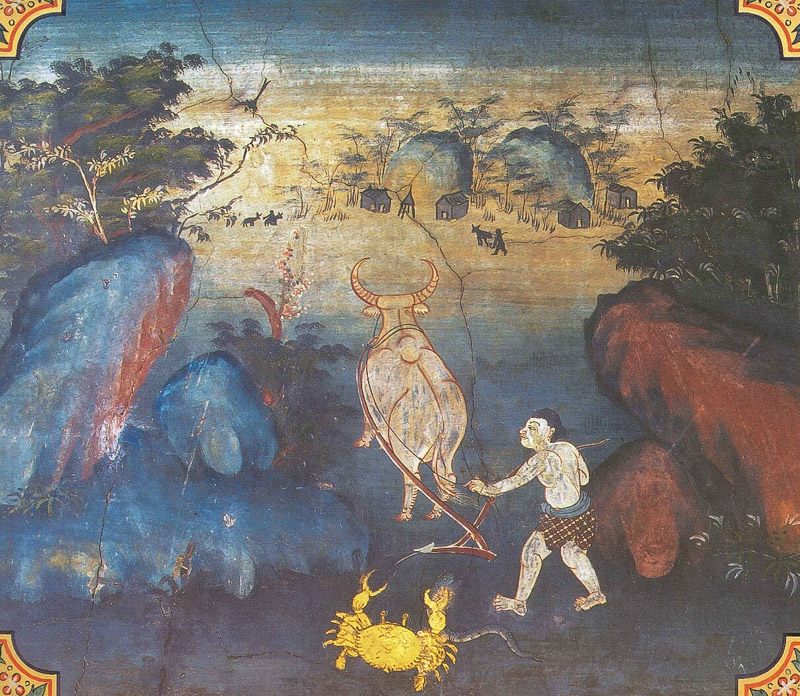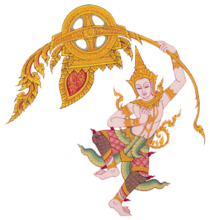
The Bodhisatta was once a farmer. A beautiful, charming golden crab lived in a pond next to his field. The Bodhisatta used to carry the crab in his outer garment while he worked and took him back to the pond before heading home each night, so they became friends.
A she-crow who nested in a tree near the pond saw the Bodhisatta’s beautiful eyes and wanted to eat them. She told her husband of her longing and schemed that their snake neighbor would kill the Bodhisatta, after which her husband would bring his eyes to her.
Agreeing to her plan, the crow started to help the snake with various things, and eventually the snake asked how he could repay him. The crow told of his wife’s desire, and the snake agreed to kill the Bodhisatta. The next day, the snake lay in wait for the farmer and bit his leg when he walked by. After the Bodhisatta fell to the ground, the crow perched on his chest and pecked at his eyes. The crab climbed out of the Bodhisatta’s pocket and grabbed the crow by the neck with his claw, and then did the same with the snake when he came to help the shrieking crow.
Knowing that crabs don’t eat snakes or crows, the snake asked why he seized them. He answered that the farmer was his friend, so the snake promised to suck the venom out of his leg and heal him. The crab let the snake go, and the farmer was revived. But the crab knew the scheming pair would try to kill him again later, so he crushed both of their heads. Seeing this from afar, the she-crow flew away. The farmer and the crab went on as before, their friendship now even stronger.
In the Lifetime of the Buddha
The crab and the crow were earlier births of Ananda, one of the Buddha’s top disciples, and Devadatta, a disciple of the Buddha who became his nemesis. When Devadatta planned his third attempt to kill the Buddha, by releasing a drunk, fierce elephant into the street while the Buddha walked his morning alms round, people told the Buddha not to go to the city. But he still went as usual.
When they saw the elephant demolishing houses and crushing wagons, all eighty of the chief elders wanted to face the elephant themselves to protect the Buddha; but he ordered them not to. Ananda, however, had such strong affection for the Buddha that he didn’t listen and stood in front of the Buddha ready to sacrifice his life. After Ananda ignored two orders from the Buddha to leave, the Buddha used his supernatural powers to send Ananda behind him. As the elephant charged, he saw the Buddha’s glorious form and fell down in worship at his feet, never again harming a person.
Later, when the Buddha heard some of his disciples discussing Ananda’s willingness to sacrifice his life for him, he told them this story so they knew that Ananda also had risked his life for him in the past.
The snake and she-crow were earlier births of the demon Mara, enemy of all that is good, and Cinca-Manavika, a woman who had falsely claimed the Buddha impregnated her.
